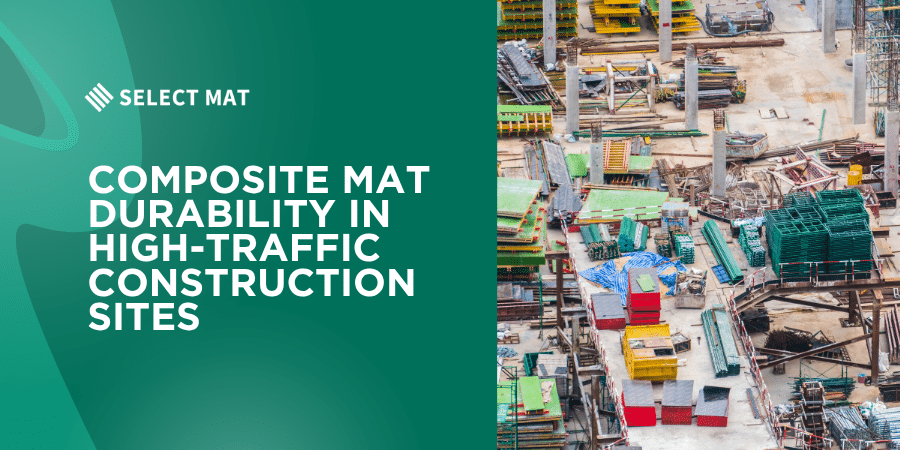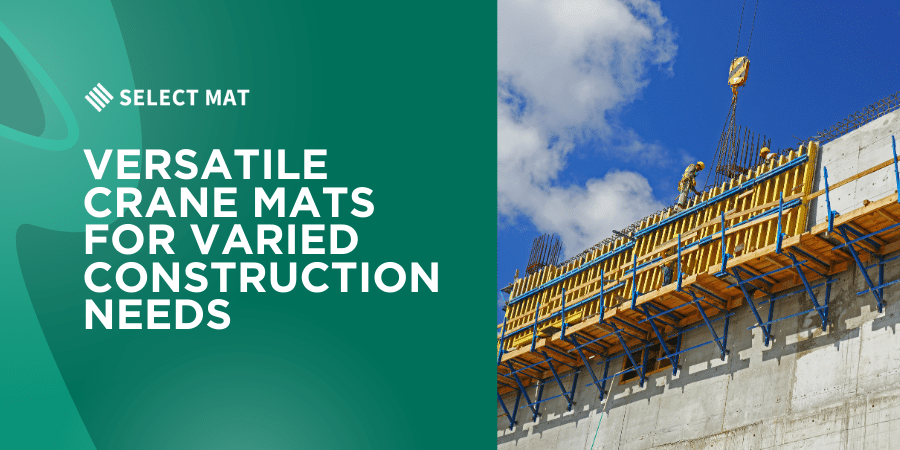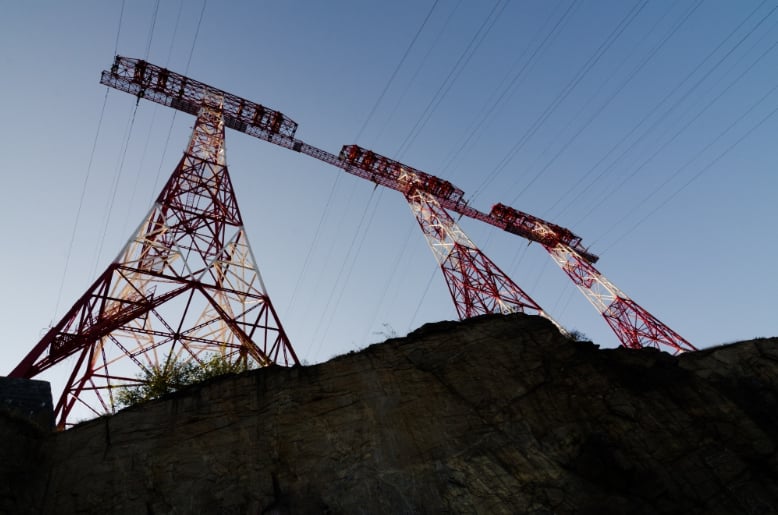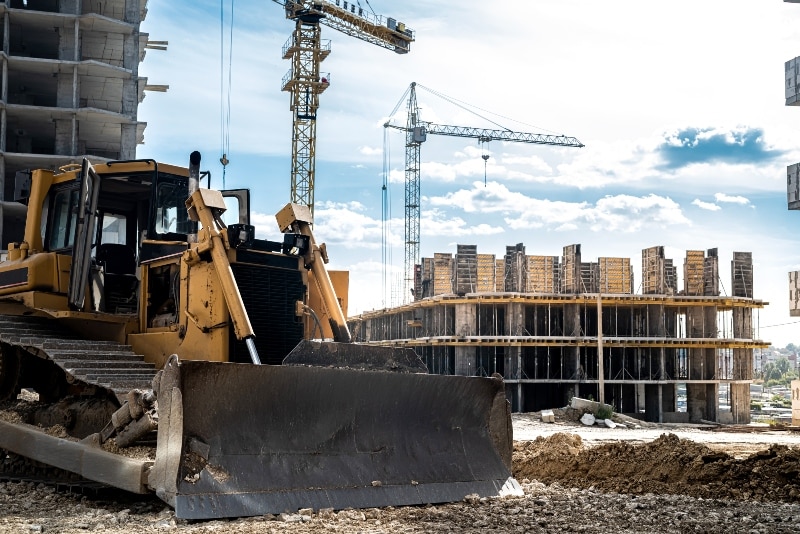Construction matting represents one of these critical solutions—and the differences between mat types can significantly impact project outcomes. This guide examines why composite mats have become increasingly popular for durability in high-traffic areas, offering specific advantages that can translate to cost savings and operational benefits for rental customers.
Composite Mats vs. Traditional Alternatives: Performance Considerations
Material Composition and Design
Composite mats are engineered using advanced polymers, typically High-Density Polyethylene (HDPE), which creates several inherent differences from traditional wood mats:
- Lighter weight construction, making transportation and handling more efficient
- Resistance to water absorption, unlike wood which can become saturated
- Engineered for consistent performance throughout their lifespan
- Not susceptible to splintering, rotting, or insect damage
- Dramatically reduces the possibility of cross contamination of soil, seeds, spores, fungi from project to project
For construction contractors and site managers, these material differences can impact operational efficiency and project timelines.
Durability Factors in Field Applications
When evaluating matting solutions for high-traffic areas, several durability factors should be considered:
- Load capacity ratings and distribution properties
- Temperature tolerance range for regional climate conditions
- Resistance to repeated equipment crossings
- Performance consistency in varying weather conditions
Project managers should request manufacturer specifications regarding these factors when selecting matting solutions for their specific applications.
Performance Benefits in High-Traffic Construction Zones
Wear Resistance in Demanding Environments
Construction sites experience constant movement of equipment ranging from standard pickup trucks to heavy machinery. In these environments, matting durability becomes a critical factor:
- Composite materials resist splintering under repeated stress
- Surface integrity remains consistent with proper use
- Performance typically remains stable through varying weather conditions
Construction and project managers should evaluate these factors when determining the most suitable matting for their projects.
Adaptability Across Different Terrains
Modern construction projects often navigate diverse landscape challenges. Composite mats are designed to function across various terrain types:
- Soft soils where load distribution is essential
- Wetland areas requiring environmental protection measures
- Uneven ground requiring stable work platforms
- This adaptability can simplify logistics by reducing the need for multiple matting solutions across a single project spanning different environments.
Environmental Considerations
The construction industry must address increasingly stringent environmental regulations. Composite mats offer several potential environmental advantages:
- Engineered without need for chemical treatments used in some wood preservation
- When interlocked, designed to distribute weight, which dramatically reduces soil compaction
- Most are recyclable at end-of-life, depending on the manufacturer
- Can be flipped or quickly cleaned between sites to reduce cross-contamination risks
Environmental compliance officers should verify specific environmental benefits with manufacturers when evaluating options.
Economic Factors: Rental Considerations for Construction Projects
Rental vs. Purchase Evaluation
When analyzing the economics of matting solutions, rental options present several considerations:
| Cost Factor | Purchasing Considerations | Rental Considerations |
| Initial Investment | Requires capital expenditure | Operational expense |
| Storage Requirements | Needs dedicated storage area | Not required |
| Maintenance | Owner responsibility | Often included in service |
| Transportation | Owner arranges logistics | May be included in rental |
| Project Flexibility | Fixed inventory available | Can adjust to project needs |
For project-specific analysis, companies should conduct a detailed cost comparison based on their unique requirements and financial parameters.
Logistics Considerations
The logistics of mat deployment present important operational considerations:
- Delivery scheduling and coordination with project timelines
- Installation requirements and equipment needs
- Scaling flexibility as project phases change
- Retrieval and transportation planning
Discussing these factors with matting providers can help identify potential efficiencies in the planning process.
Current Technology in Composite Mat Manufacturing
Manufacturing Processes
Modern composite mats incorporate various manufacturing techniques that influence performance:
- Molding processes and internal design that determine structural characteristics
- Material selection affecting weight and durability
- Size of the mat is dependent on the manufacturer and can affect surface area per truckload
- Connection systems for creating continuous work platforms are proprietary and based on manufacturer
- Surface texturing for traction in various conditions
When evaluating options, requesting information about these manufacturing specifications can help match mat capabilities to project requirements.
Maintenance Requirements
Understanding maintenance needs is important for evaluating total cost of ownership:
- Cleaning procedures between deployments
- Inspection protocols for identifying damage
- Connection system maintenance
- Repair options when damage occurs
Rental providers often include maintenance as part of their service, which should be confirmed when establishing agreements.
Selection Guide: Matching Composite Mats to Project Requirements
Assessment Factors for Project Planning
Selecting the optimal matting solution requires evaluating several key factors:
- Load requirements:
- Anticipated equipment types and weights
- Frequency of traffic and movement patterns
- Static load duration requirements
- Ground conditions:
- Soil types and stability factors
- Environmental sensitivity considerations
- Drainage characteristics
- Slope and terrain variations
- Project duration:
- Timeline for matting needs
- Seasonal considerations
- Phasing requirements
- Weather considerations:
- Regional climate factors
- Seasonal variations expected during the project
- Drainage needs for precipitation
Consultation Process
Working with matting specialists typically involves several steps:
- Site assessment: Evaluation of terrain, access points, and environmental factors
- Traffic analysis: Understanding equipment movements and frequency
- Load calculation: Determining weight requirements for the installation
- Timeline planning: Coordinating deliveries and removals
- Compliance review: Addressing applicable regulations
This consultative approach helps ensure the selected matting solution aligns with project requirements.
Conclusion: Strategic Considerations for Composite Mat Rental
In today’s construction landscape, the durability, environmental profile, and cost-effectiveness of composite mats make them worth considering for high-traffic project areas. The rental model offers flexibility by eliminating capital expenditures and maintenance concerns while providing adaptability as project needs evolve.
Select Mat specializes in composite matting solutions alongside traditional options like Timber Mats, CLT Mats, and Laminated Mats for rent or lease throughout the continental United States. Our rental programs provide predictable pricing with comprehensive rates covering transportation, maintenance, and installation/removal services.
Our leasing option is designed for projects extending beyond three months, with terms that can be tailored to project timelines. Payments can be structured to align with your project financial planning.
Take the Next Step
Ready to explore matting options for your project? Contact Select Mat today for a customized assessment and quote tailored to your specific requirements. Our team will help you determine appropriate solutions for your upcoming pipeline or T&D project.
Call us or visit our website to learn more about composite mat solutions for high-traffic construction environments.
FAQ: Composite Mat Considerations
Q: What factors affect composite mat longevity in high-traffic applications?
A: Key factors include the quality of materials, manufacturing processes, load patterns, ground conditions, weather exposure, and maintenance practices.
Q: Can composite mats support heavy construction equipment?
A: Composite mats are engineered to support heavy equipment when properly installed according to manufacturer specifications. Load ratings vary by product and should be verified for specific applications.
Q: How do environmental conditions affect composite mat performance?
A: Environmental factors including temperature, moisture, UV exposure, and ground conditions can impact performance. Manufacturers typically provide specifications regarding appropriate operating conditions. Most heavy-duty composite mats carry a rating of 600 psi or greater.
Q: What environmental benefits do composite mats offer?
A: Potential benefits include reduced need for chemical treatments, protection of sensitive ground surfaces, recyclability, and the ability to clean between sites to prevent cross-contamination.
Q: What maintenance do composite mats typically require?
A: Maintenance requirements vary by manufacturer but often include cleaning between deployments, connection system checks, and regular inspection for damage. Rental providers can clarify specific maintenance included in their services.




